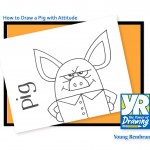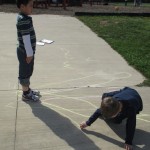How to Draw a Pig!
 Learning to draw is fun, enjoyable and easy for your children! Improve your kid’s drawing technique and art skills with this easy to follow video drawing tutorial.
Learning to draw is fun, enjoyable and easy for your children! Improve your kid’s drawing technique and art skills with this easy to follow video drawing tutorial.
 Learning to draw is fun, enjoyable and easy for your children! Improve your kid’s drawing technique and art skills with this easy to follow video drawing tutorial.
Learning to draw is fun, enjoyable and easy for your children! Improve your kid’s drawing technique and art skills with this easy to follow video drawing tutorial.
A few weeks ago my sister Diane called to talk about her granddaughter Lanie. 
Here are 8 AWESOME apps to help your child learn and enjoy reading! 

Staycation is off to a great start, I am unable to take off work full time this year but I have made a few allowances to let myself out early and relax in this pretty season. 
I recently went through the messy and exhausting process of deep cleaning of my home office.
As much as a good purging and declutter is for us as adults, it is even more significant for our kids. Young children are in the process of developing internal order and the space around them profoundly affects them externally and internally.
Standardized tests can strike fear in the heart of any man – young and old, but ever wonder why? It seems odd that a few questions that require a pencil dot on a Scantron Sheet, can bring forth such stress and emotion. This is especially true for visual-spatial learners whose test results don’t reflect their true intelligence or ability.

Testing time is here in many US schools. When my kids were young, there was much less emphasis on standardized testing and test results. Now schools devote much of February getting kids prepared for standardized testing that happens in March.